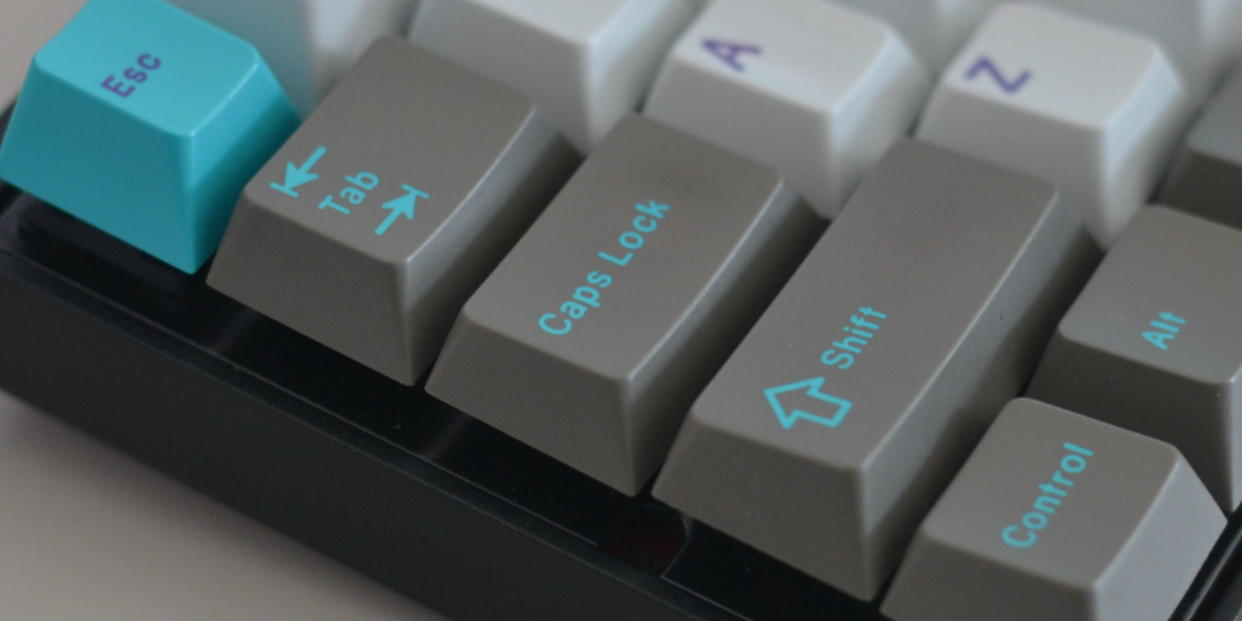How and Why to Make Your Caps Lock Key Actually Useful

If you're anything like me, you make good use of the Backspace key. But look where it is-way up on the upper righthand corner, dragging your hand away from the action with every inevitable mistake. Now look at Caps Lock, a mirror image of Enter, likely sitting unused in prime real-estate, right under your lefthand pinky. Now imagine if you could switch them. Well you can, and you should. Allow me to explain why and how.
Caps Lock is useless, or at the very least vestigial. It's a holdover from typewriter days when holding down a shift key required actual, strenuous effort. Alternative key layouts that have bubbled up in years since, like Colemak and versions of Dvorak, have often swapped it out for Backspace, or sometimes Control, to great effect. But then there are all those other keys to learn as well. Fortunately a simple two-key switch is much easier to get used to, and the better ergonomics make it worth the change for quicker, more comfortable typing.
If you have a keyboard that lets you remap keys in hardware, I assume you know how it works already. If not, there are relatively simple ways to make the change on your computer, which you can jump to at the bottom of this post. But first let me offer just a little first-hand advice-and caution.
I was able to acclimate in just about a day.
Switching the position of Backspace is one thing to do, but quite another to get used to. Still, when I made the swap, I was able to acclimate in about a day. There are two ways to do it, depending on how hard and fast you want to learn.
First, you can just make Caps Lock an additional Backspace or Control key, and just use it whenever you remember it is there. Second, you can actually swap the Backspace key to something else entirely (I programmed mine to output " :D "), and the frustration will train you out of hitting it very quickly. This adjustment period is by no means pleasant, but it's quick and worth it if you stick to your guns.
One more thing to consider: How often do you use computers that are not yours? If the answer is anything but "hardly ever" it might be wise to pump the breaks. As a Caps Lock Backspacer myself, I frequently make strange all-caps typos when typing on foreign computers, having mashed the Caps Lock in vain and then hitting Enter before I realize what is going on.
Now, on any computer I plan to use for more than about 15 minutes, I basically need to do the key-swap first, or bring a custom-coded keyboard to the party. But I'm more than willing to deal with that annoyance for comfort and speed the other 99 percent of the time. You might say I am a crazy person. You might be right. If you'd like to join me, here is how to do it.
How to change your Caps Lock key to something else
MacOS: In System Preferences > Keyboard, you will find a bottom at the bottom right labeled Modifier Keys. Click this and go to the Caps Lock drop down. If you would like to change your Caps Lock key to Control, Option, or Shift, use the options in the dropdown. If you want Backspace, set it to No Action.
Next, download and install the freeware app Seil. Under the Settings tab, check the box for Change the Caps Lock key and set the new keycode to 51 for Delete. You are good to go!

Close out the window but don't press the Quit Seil button, or the things go back to normal. Beware, your new Backspace key may not work on the login screen after reboot, because Seil won't boot up until you log in.
Windows 10:
Download and install the application KeyTweak, boot it up and take a look at the window, which shows a representation of your keyboard, each key with a number. Click your Caps Lock key (probably 30) and choose a new key from the dropdown menu. Hit the Remap Key button and then Apply Changes and restart your computer.

Note: KeyTweak is just an easy, graphical way of editing your registry settings. There are other ways to do this swap that don't involve installing any other programs, but I'm not going into them here.
Ubuntu (and some other flavors of Linux): Open a Terminal window and run the following line of code:
setxkbmap -option caps:backspace
That's it! But it will go away if you reboot. To fix this, search for the Start-up applications dialog on your computer, open it, and click the button for Add. Enter the above command in the Command field and title it something you'll remember. Finish by hitting Add again, and the command should now run on startup.
Note: Some Linux distributions have a setting to turn Caps Lock into Backspace buried in the built-in keyboard settings menus. That will probably be slightly easier if it is there, but it may not be.
You Might Also Like

